Fascinating Moon Landing Facts for Kids 2024
The moon landing, a marvel that unfolded on July 20, 1969, captured the imaginations of millions worldwide. It was a moment when human history took a quantum leap as Neil Armstrong, an Apollo 11 astronaut, took “one giant leap for mankind.”
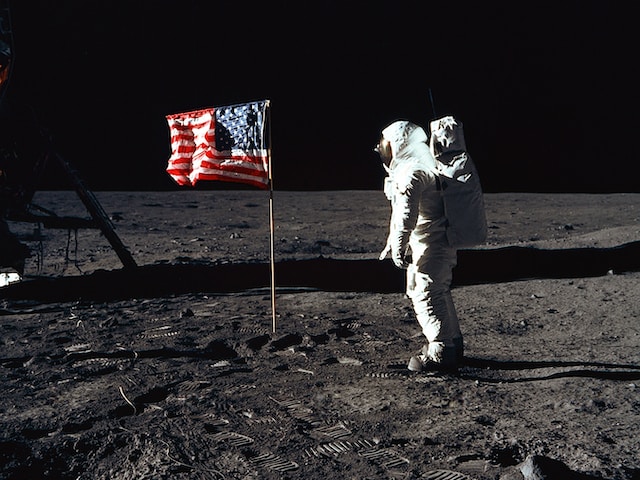
Take a journey with us through 8 riveting facts about the Apollo 11 Moon Landing that are genuinely out of this world!
1. The Surprising Origins of the Lunar Flag
Would you believe it if we told you that the American flag planted on the moon had a surprising origin—it was made by Sears, the department store? The backstory is quite intriguing.
The Tang Connection: Back in the early ’60s, Tang, a powdered orange drink by General Foods, made waves when astronaut John Glenn took a sip of it aboard the Friendship 7 spacecraft during his orbit around Earth in 1962. This marked the beginning of Tang’s journey into space.
Tang’s Celestial Fame: Astronauts brought Tang along on their missions, and it even sponsored the TV coverage of Apollo 8, which was America’s very first crewed flight around the moon. NASA’s unintentional promotion turned Tang into a sensation among the masses.
A Surprising Decision: However, when it came to the Apollo 11 mission, NASA made a surprising decision. Despite Tang’s popularity, they chose not to turn the planting of the American flag on the moon’s surface into another advertising opportunity.
If you’re curious about the space-themed commercials of the time, you can check out a vintage Tang commercial from 1966, well before some of us were even born, where it was declared, “Tang: chosen for the Gemini astronauts. Have a blast. Have some Tang.
2. The Enigma of Neil Armstrong’s Words
“That’s one small step for man, one giant leap for mankind.” These are the words that astronaut Neil Armstrong spoke during his historic moonwalk in 1969, words that have resonated for decades.
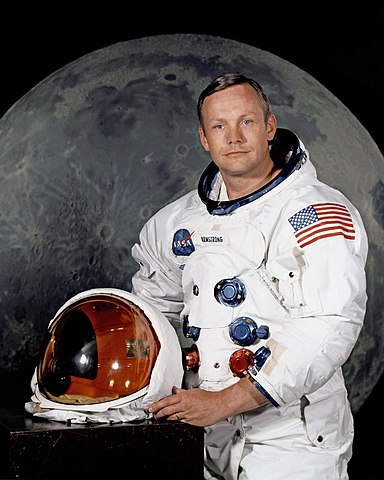
Unraveling the Enigma: It might seem like a case of “fake news,” but Neil Armstrong was steadfast in his claim that he said, “one small step for a man,” not “one small step for man.” The challenge lies in the grainy audio recordings from NASA, which couldn’t definitively settle the debate.
Solving the Puzzle: Researchers from Michigan State University and Ohio State University took on the challenge of deciphering this lunar mystery. They delved into conversational speech patterns from 40 individuals who grew up near Armstrong’s hometown of Wapakoneta, Ohio. What they discovered was that people often blended the words “for a” to sound like “frrr(uh).”
Listen and Decide: If you’re curious about what Armstrong’s historic first words truly were, you can listen to NASA’s original audio file and form your own opinion on this enduring lunar enigma.
3. From Apollo 11’s Computers to Your Smartphone
The Apollo Guidance Computers that powered astronauts Neil Armstrong, Buzz Aldrin, and Michael Collins on their lunar journey in July 1969 were technological marvels of their time. However, the difference is staggering compared to today’s smartphones.
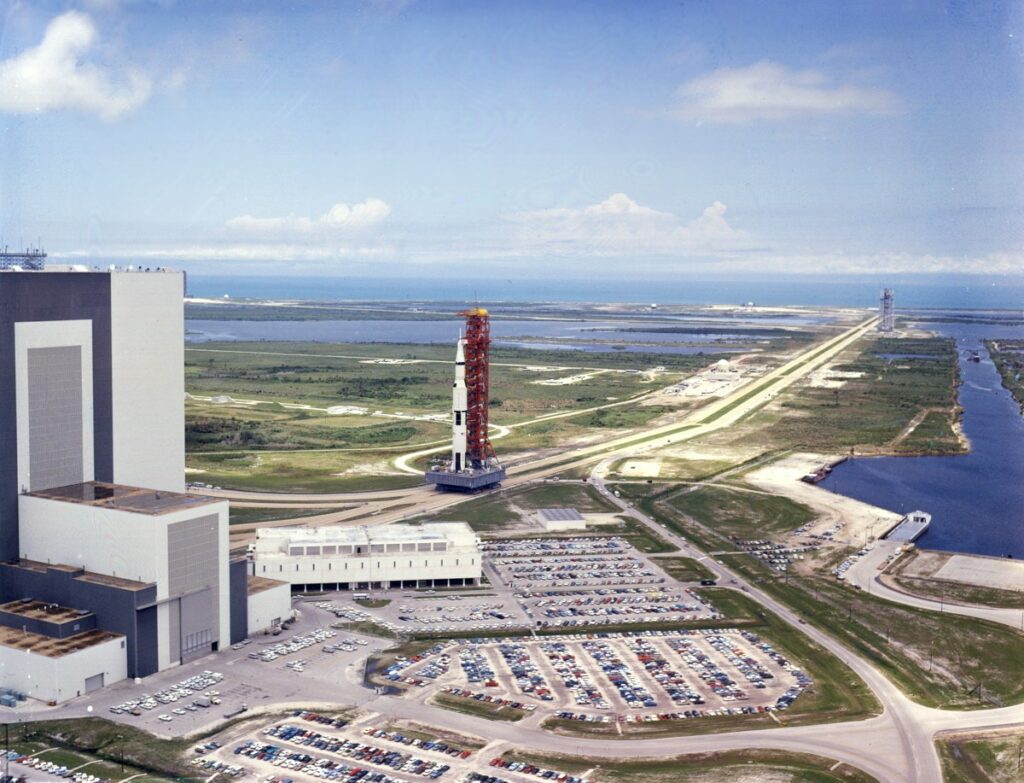
Technological Revolution: To put things into perspective, consider the Samsung Galaxy S10 Smartphone, boasting eight gigabytes of memory—a true technological powerhouse. Contrast this with the Apollo 11 computer, which successfully transported astronauts to the moon and back with just two kilobytes of memory.
4. Krispy Kreme’s Delicious Lunar Tribute
Krispy Kreme, the beloved doughnut chain, joined the celebration of the 50th anniversary of the Apollo 11 moon landing in a delectable manner.
The Doughnut Delight: Krispy Kreme introduced a mouthwatering twist to its classic Original Glazed doughnut—the Original Filled Doughnut. This delightful treat comes with two delectable filling options: “Classic Kreme” and “Chocolate Kreme.”
A Sweet Space Connection: Interestingly, Krispy Kreme’s connection with space history goes way back to the Apollo 11 launch in 1969. They served fresh doughnuts to the crowds who gathered to witness this historic event. You can even watch their entertaining video promoting these Apollo 11-inspired doughnuts if you’re curious.
5. Names of NASA’s Modules
“The Eagle has landed.” This iconic phrase remains etched in NASA’s history, but have you ever wondered how the trusty lunar module of Apollo 11 earned its name?
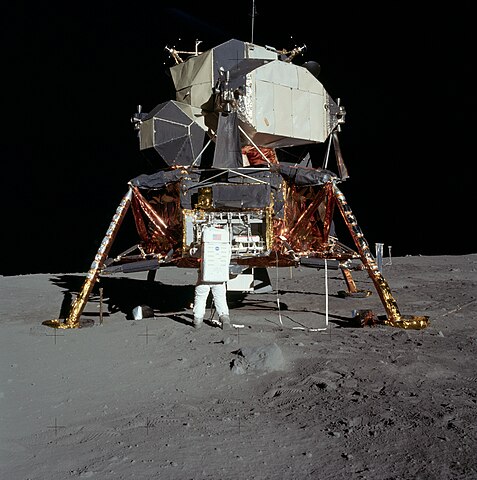
Fascinating Origins: The Apollo 11 Lunar Module, christened Eagle, took its name from America’s national bird—a symbol of freedom and soaring aspirations. The name was just right for the spacecraft that took humans to another world.
And when it comes to the mission’s command module it borrowed its name from Jules Verne’s book “From the Earth to the Moon,” where a huge cannon that launched a spacecraft to the moon was called “Columbiad.”
6. The Amazing Space Pen
Picture this: During the Apollo 11 mission, astronauts required a pen that could perform its writing magic in the absence of gravity. The solution? The Fisher Space Pen.
Upside Down, Underwater, and More: This incredible pen could write not only upside down but also underwater and in extreme temperatures. It was like a superhero pen for space missions.
A Lifelong Companion: This remarkable pen wasn’t a luxury but a necessity for astronauts in space. Surprisingly, it’s still in use during space missions today, proving its worth over the years.
7. The Special Space Suits
The space suits donned by the Apollo 11 astronauts were meticulously crafted to safeguard them from the unforgiving conditions of space. These suits consisted of several layers of fabric, offering vital protection.
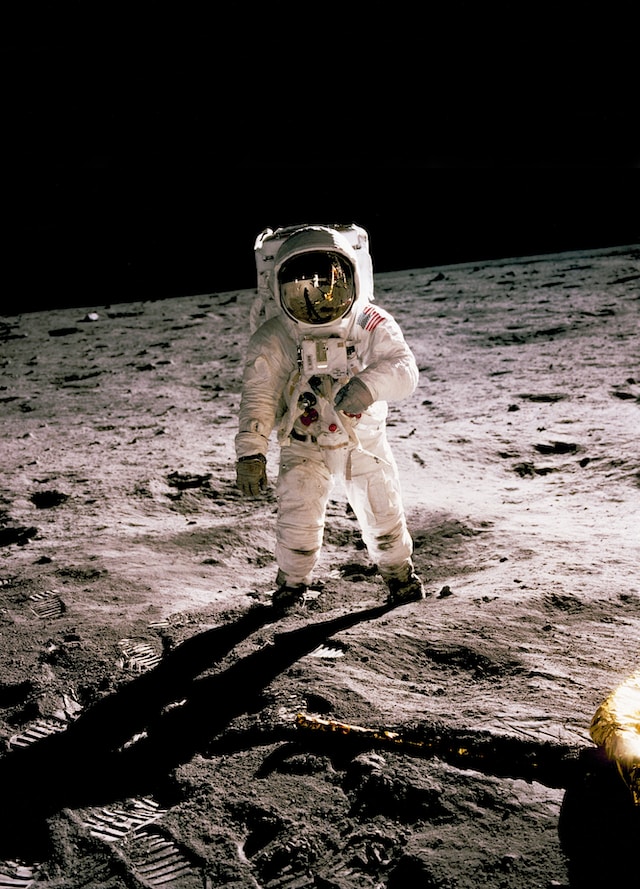
Shielding from the Sun: An essential feature of these suits was the gold-coated visor, which served as a shield against the intense brightness of the sun. This visor shielded the astronauts’ eyes from the blinding light.
Guardians of Safety: These space suits played an indispensable role in ensuring the astronauts’ safety during their extraordinary journey.
8. The Lunar Module’s Insulation
To protect the lunar module and its intrepid crew from the moon’s drastic temperature swings, a remarkable insulation solution was devised. This outer layer consisted of aluminized Kapton foil, a multi-layered marvel.
Reflecting Sunlight: One key role of this insulation was to reflect the harsh sunlight away from the module, preventing it from turning into an oven.
Maintaining Comfort: Thanks to this clever insulation, the astronauts could work comfortably inside the module, unaffected by the moon’s extreme temperatures. It was a crucial element in their mission’s success.
FAQ Section
Did the astronauts bring any moon rocks back to Earth?
They collected about 50 pounds of moon rocks and soil samples for scientists to study.
What did the astronauts eat on the moon?
Astronauts ate food like freeze-dried meals and drank liquids through straws connected to their helmets.
How many people have walked on the moon?
A total of 12 astronauts have walked on the moon during various Apollo missions.
How long did the Apollo 11 mission last?
The Apollo 11 mission lasted approximately eight days, from launch to splashdown.
Conclusion
The Apollo 11 moon landing stands as a major achievement in human history. These facts add an exciting and fun twist to learning about this historic event, especially for young minds. It represents our passion for exploration and innovation, constantly inspiring us to seek new horizons.
Our future doesn’t just lie among the stars; it extends far beyond. So, young adventurers, aim higher than the stars themselves!
